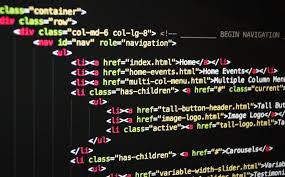Introduction
In today’s digital era, learning to code is one of the most valuable skills anyone can develop. In 2025, the demand for programmers, software engineers, and web developers is stronger than ever. The best part? You don’t need a computer science degree to start coding. All you need is a computer, an internet connection, and a strong will to learn. This article will guide you step-by-step on how to start learning programming from scratch, even if you’ve never written a single line of code before.
Step 1: Know Why You Want to Learn Coding
The journey of learning becomes easier when your goals are clear. So before you choose a language or a course, ask yourself:
- Do I want to build websites?
- Am I interested in mobile app development?
- Do I want to become a data scientist?
- Is freelancing or remote work my aim?
Your answers will help you choose the right path in the world of programming.
Step 2: Choose the Right Programming Language
Each language has its purpose. Here’s a simplified guide for beginners:
- HTML & CSS – Basic for web development. Great for absolute beginners.
- JavaScript – Adds interactivity to websites. Ideal for front-end development.
- Python – Easy to learn and used for automation, AI, and data science.
- Java – Powerful language for Android apps and large systems.
- SQL – Used to handle and manage databases.
- C++ or C# – Best for game development and software performance.
If you don’t know where to start, go with Python. It’s beginner-friendly and widely used.
Step 3: Use Free and Paid Learning Platforms
In 2025, hundreds of online platforms offer free and paid resources. You don’t need to spend thousands on a degree when there are quality alternatives available online. Some trusted platforms include:
- freeCodeCamp – Learn and build projects. Offers free certifications.
- Coursera – University-level courses, many available for free.
- Udemy – Affordable courses on every coding topic.
- Khan Academy – Great for younger learners or total beginners.
- CS50 by Harvard – A complete introduction to computer science.
Combine video tutorials with practice for the best results.
Step 4: Practice What You Learn
Theory is important, but practical skills are what make a coder successful. As soon as you start learning, open a code editor and try writing code on your own.
- Start with small tasks like printing text.
- Move on to creating a calculator or simple webpage.
- Gradually build larger projects.
Practice daily. Even 30 minutes a day can make a huge difference over time.
Step 5: Use Interactive Coding Platforms
Many learners struggle to understand abstract concepts. That’s where interactive websites help. These platforms offer real-time code editors and feedback:
- Replit – Code directly in your browser.
- SoloLearn – Learn on mobile with short lessons and quizzes.
- Codewars – Solve coding puzzles and improve logic.
- HackerRank – Practice coding problems and prepare for job interviews.
These platforms turn learning into a fun, game-like experience.
Step 6: Build Real-World Projects
Once you’ve covered the basics, shift your focus to real-world projects. Projects not only test your skills but also give you something to showcase to employers or clients.
Here are some beginner project ideas:
- Personal portfolio website
- To-do list app
- Weather app using an API
- Basic blog using HTML/CSS
- Calculator using JavaScript
Post these projects on GitHub to build a public portfolio.
Step 7: Learn Git and GitHub
As a programmer, you’ll often work on multiple versions of the same project. Git helps you manage versions, and GitHub allows you to store them online and collaborate with others.
- Learn how to commit changes
- Push your code to GitHub
- Contribute to open-source projects
Even basic Git skills are enough to get started.
Step 8: Follow a Roadmap Based on Your Goal
Every programming career has its own learning path. Choose one and follow it systematically.
For Frontend Web Developers:
- HTML → CSS → JavaScript → React
For Backend Developers:
- Python or Node.js → Express → Databases (SQL or MongoDB)
For Data Science:
- Python → Pandas → NumPy → Matplotlib → Machine Learning
Search for free roadmaps online that break down your path into weeks or months.
Step 9: Join Coding Communities
Don’t learn alone. Join communities to ask questions, share your progress, and get inspired.
Popular communities:
- Reddit (r/learnprogramming)
- Stack Overflow
- Dev.to
- Discord groups for developers
Being part of a community will help you stay motivated and connected.
Step 10: Start Freelancing or Applying for Jobs
Once you’ve built some projects and developed confidence in your skills:
- Create profiles on Upwork, Fiverr, or Freelancer
- Apply to internships or junior developer jobs
- Build your own web applications or tools
You don’t have to wait to be an expert. Clients often value practical skills and the ability to solve problems over degrees.
Conclusion
Learning coding in 2025 is easier and more accessible than ever before. Free tools, interactive courses, and global communities make it possible for anyone to become a programmer—without spending a dime.
So whether you’re aiming to build a tech career, work remotely, or just create your own apps, coding is a powerful tool to unlock opportunities.
All you need is dedication, consistency, and a little guidance—and now, you have that guide in your hands.
Start today. One line of code at a time.

